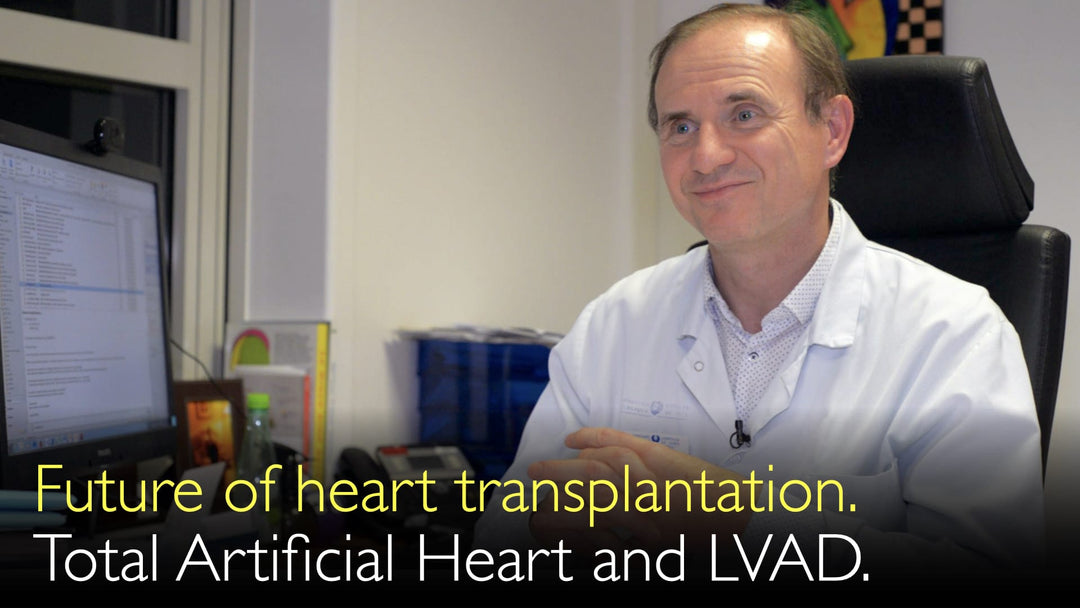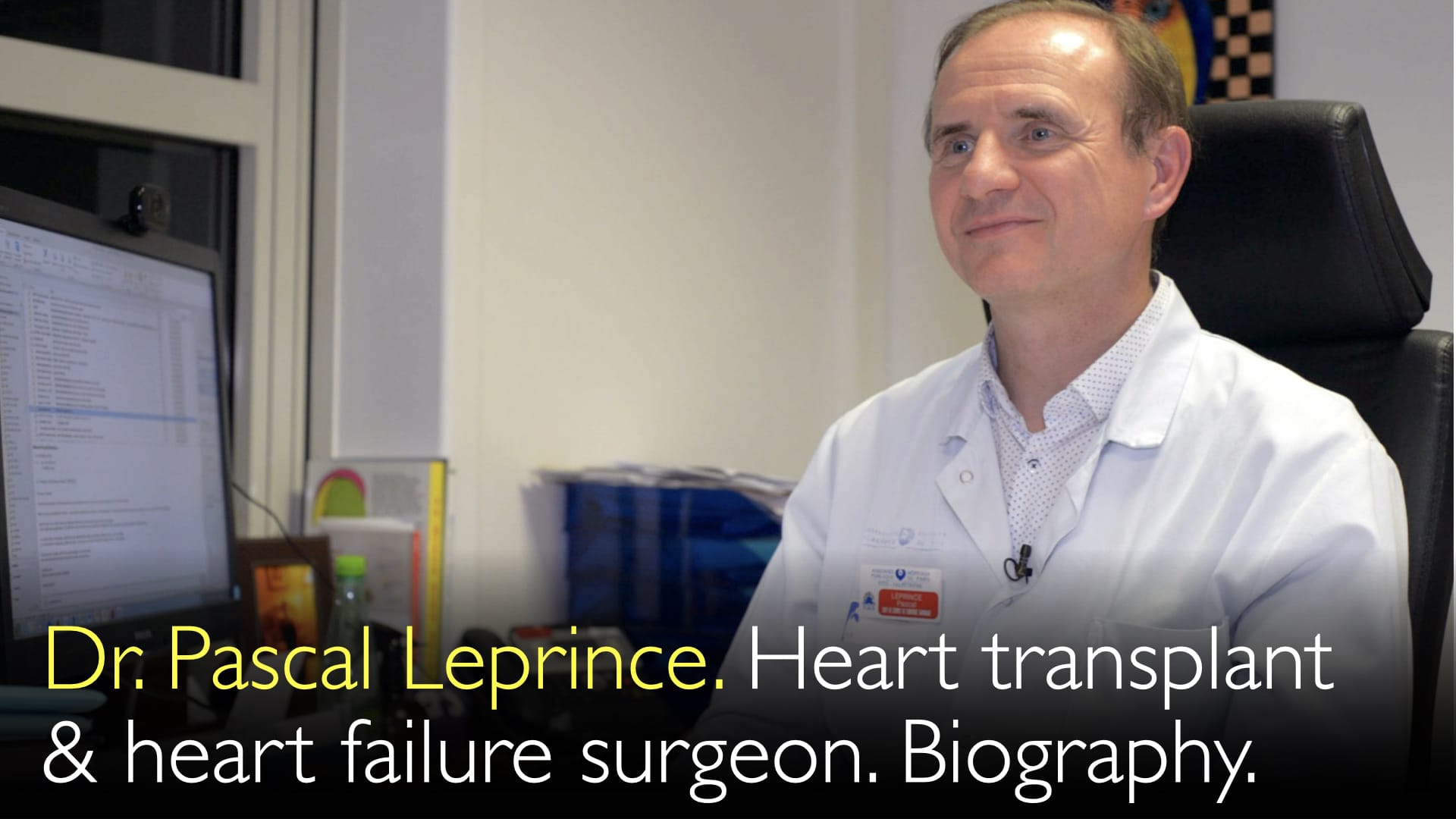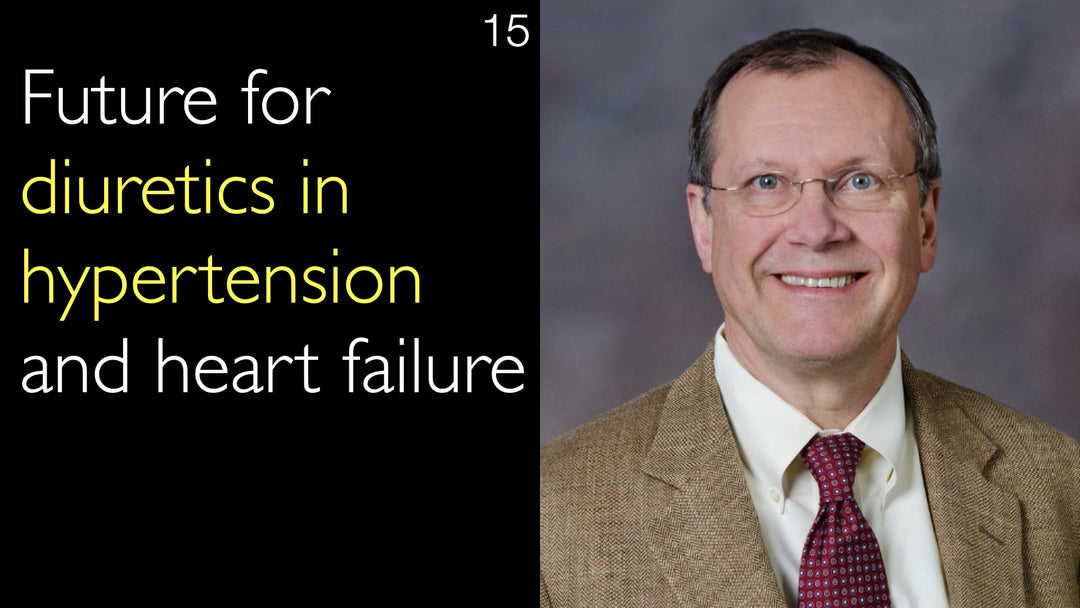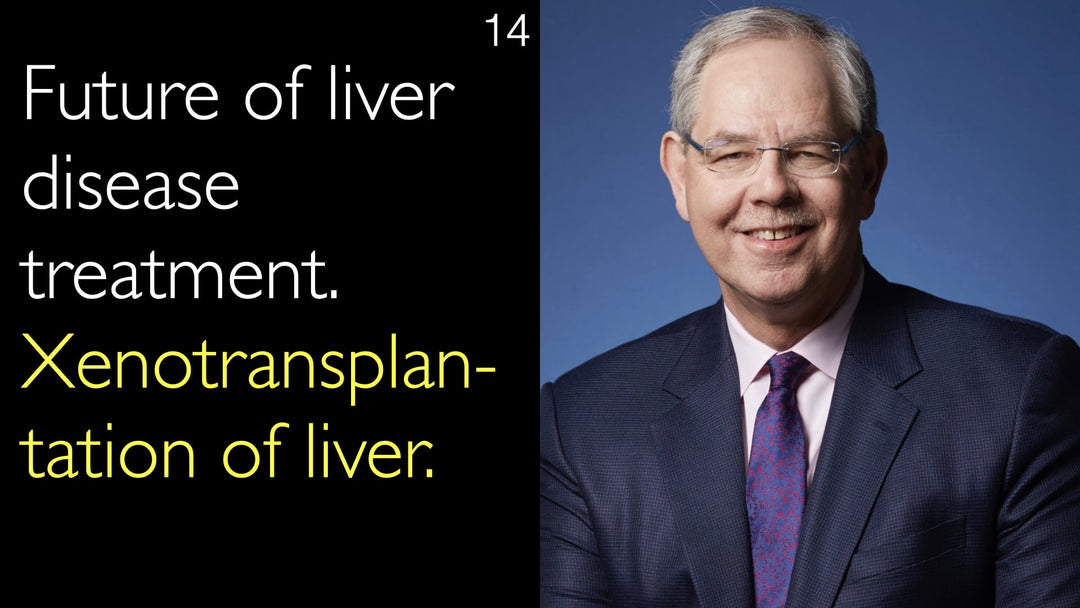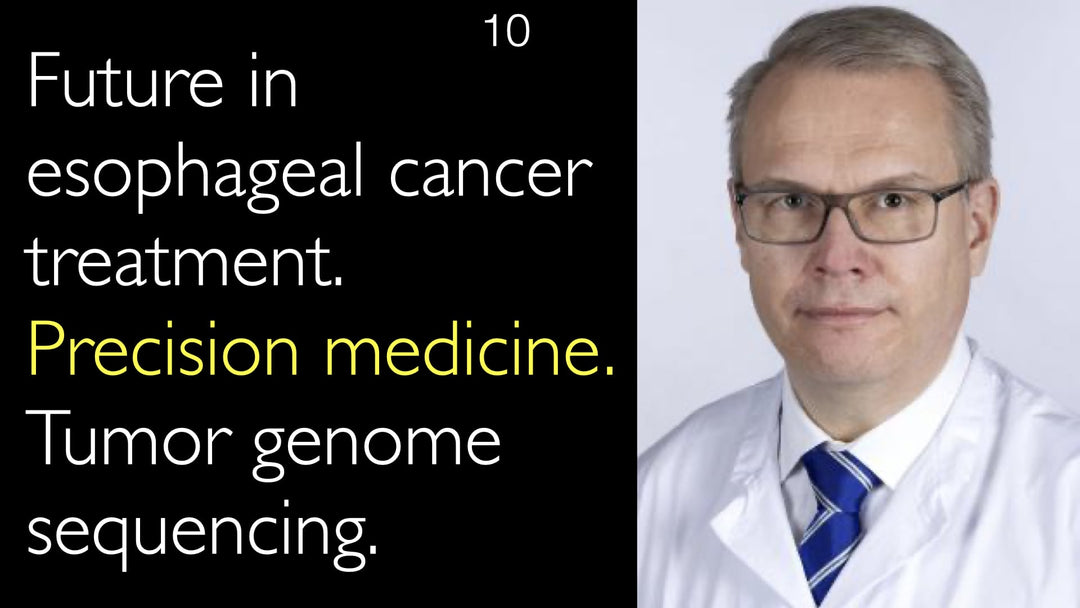מומחה מוביל בהשתלות לב ובטיפול באי-ספיקת לב מתקדמת, ד"ר פסקל לפרינס, MD, מסביר את הצורך הקריטי בתיאום טיפול משופר וכיוונים עתידיים בטיפול. הוא מדגיש שארגון טוב יותר של מומחי אי-ספיקת לב הוא השיפור המשמעותי הראשון הנדרש, ולאחריו התקדמויות בטכנולוגיית LVAD (מכשירי סיוע חדר שמאל), השתלות לב, ולב מלאכותי מלא. ד"ר לפרינס גם מדגיש את הצורך הדחוף באפשרויות טיפול טובות יותר עבור מטופלים קשישים עם אי-ספיקת לב מתקדמת, שם איכות החיים היא המטרה העיקרית.
עתיד הטיפול באי-ספיקת לב מתקדמת: LVAD, השתלת לב ולב מלאכותי מלא
קפיצה לפרק
- תיאום הטיפול באי-ספיקת לב
- LVAD לעומת השתלת לב
- עתיד הטיפול המדכא חיסון
- לב מלאכותי מלא
- אי-ספיקת לב בגיל המבוגר
- תמליל מלא
תיאום הטיפול באי-ספיקת לב
ד"ר פסקל לפרינס, MD, מצביע על פער משמעותי בטיפול באי-ספיקת לב מתקדמת: היעדר צוות רב-מקצועי מתואם. הוא מסביר שהמערכת הנוכחית часто מאכזבת מטופלים, שיכולים לפנות לרופא משפחה, קרדיולוג עירוני וקרדיולוג בית חולים ללא תיאום מרכזי. גישה מקוטעת זו意味着אפשרויות טיפול מקיפות כמו טיפול בסנכרון לבבי, LVAD או השתלה אינן נדונות מוקדם מספיק.
המודל האידיאלי, לפי ד"ר לפרינס, מציב קרדיולוג מומחה לאי-ספיקת לב במרכז הטיפול במטופל. מומחה זה יארגן את כל הרופאים ה"לוויינים" האחרים, כולל אלקטרופיזיולוגים וכירורגים לבביים, כדי להבטיח רציפות ונתיב הטיפול המיטבי. ד"ר פסקל לפרינס, MD, מציין שבצרפת, קרדיולוגיה של אי-ספיקת לב עדיין אינה תעודה רשמית, מהווה מכשול משמעותי ליישום מבנה טיפול מותאם זה.
LVAD לעומת השתלת לב
למטופלים עם אי-ספיקת לב מתקדמת שאינה מגיבה עוד לתרופות, ד"ר פסקל לפרינס, MD, מתאר שתי אפשרויות טיפול עיקריות: השתלת התקן סיוע חדר שמאלי (Left Ventricular Assist Device - LVAD) והשתלת לב. הוא מציין שונות גיאוגרפית בשימושם, עם מדינות שמשתילות יותר LVAD ואחרות, כמו צרפת, המבצעות יותר השתלות. שאלה קריטית ללא מענה נותרת: איזה טיפול באמת הטוב ביותר עבור איזה מטופל?
ד"ר לפרינס תומך strongly במחקר קליני אקראי מבוקר להשוואה ישירה בין השתלת LVAD להשתלת לב. הוא מציין שטכנולוגיית LVAD חוותה שיפורים עצומים, ויתרונה הגדול הוא זמינות מיידית ללא lista המתנה. עם זאת, שיעור הסיבוכים יכול להיות גבוה יותר מאשר בהשתלה. מחקר מדעי קפדני חיוני להנחיית החלטות טיפול ושיפור תוצאות המטופלים long-term באי-ספיקת לב מתקדמת.
עתיד הטיפול המדכא חיסון
ההצלחה long-term של השתלת לב מסתמכת על תרופות מדכאות חיסון למניעת דחיית איבר. ד"ר פסקל לפרינס, MD, דן בעתיד היבט קריטי זה של טיפול post-transplant. הוא מביע אי-ודאות regarding פיתוח תרופות מדכאות חיסון חדשות ויעילות יותר, ומציין שמעט very novel agents מגיעים לשוק.
מעל 15 שנה, התחield דן בהתאמה אישית של הטיפול המדכא חיסון לכל מושתל, מטרה שנשארת חמקמקה. ד"ר לפרינס מקווה שתכניות מדכאות חיסון טובות יותר ומותאמות אישית eventually יפותחו כדי לשפר את אריכות החיים ואיכות החיים של מושתלי לב. זה נותר תחום מפתח למחקר ופיתוח future בטיפול באי-ספיקת לב מתקדמת.
לב מלאכותי מלא
ד"ר פסקל לפרינס, MD, מתייחס לאוכלוסיית המטופלים המורכבת עם אי-ספיקת לב דו-חדרית, where שני צדי הלב כושלים. מטופלים these אינם מועמדים להתקן סיוע חדר שמאלי (LVAD) וכרגע rely on הלב המלאכותי המלא SynCardia (TAH) כגשר להשתלה. While effective, ד"ר פסקל לפרינס, MD, מציין שאיכות החיים עם התקן זה אינה מספקת כדי להיחשב כ-treatments יעד.
העתיד טמון בפיתוח לבבות מלאכותיים מלאים next-generation. ד"ר פסקל לפרינס, MD, מדגיש את הלב המלאכותי המלא Carmat, שהושתל במטופלים בצרפת, פראג ואסטנה during ניסויים קליניים. He confirms that טיפולים ניסיוניים עם התקן זה מתוכננים to restart בצרפת. בואם של התקני TAH חדשים ומשופרים these could להציע פתרון long-term viaביל for מטופלים עם אי-ספיקת לב דו-חדרית terminal.
אי-ספיקת לב בגיל המבוגר
חלק significant מאוכלוסיית אי-ספיקת הלב הוא מבוגר, וד"ר פסקל לפרינס, MD, מסביר שאפשרויות הטיפול שלהם severely מוגבלות. מטופלים מעל גיל 75 generally אינם מועמדים להשתלת לב או השתלת LVAD due to סיכונים associated גבוהים יותר. הקו המפריד הוא approximate, אך after גיל זה, הטיפול typically מוגבל לתרופות וטיפול בסנכרון לבבי.
לקבוצה demographic זו, ד"ר פסקל לפרינס, MD, states that מטרת הטיפול shifts entirely לשיפור איכות החיים rather than התמקדות בהישרדות. He emphasizes the הצורך הדחוף בתרופות better לאי-ספיקת לב המותאמות specifically למטופלים מבוגרים. העתיד של הטיפול באי-ספיקת לב מתקדמת must include פיתוח therapies המאפשרות למבוגרים לחיות את שנותיהם final עם איכות החיים הטובה ביותר possible.
תמליל מלא
ד"ר אנטון טיטוב, MD: אתה כירורג השתלות לב leading. אתה מתמודד עם טיפול באי-ספיקת לב מתקדמת. יש הרבה changes בטיפול באי-ספיקת לב והשתלת לב. איך אתה רואה את העתיד להשתלת לב ולטיפול באי-ספיקת לב מתקדמת?
ד"ר פסקל לפרינס, MD: אני מקווה שבעוד many hundred years מעכשיו, לא נזדקק more להשתלות לב. Because we will understand everything about the disease, about heart failure. נוכל למנוע מחלת עורקים alliliary. נרפא מחלת עורקים alliliary before המחלה מגיעה לאי-ספיקת לב bad. חוות דעת second opinion רפואית חשובה. זה העתיד בהשתלת לב ואי-ספיקת לב.
Before that, we will have to face all the treatments. אני חושב שהשיפור first שאנחנו יכולים להביא לאי-ספיקת לב אינו שיפור רפואי real. Neither is it a device improvement. זה שיפור בארגון האנושי. זה משהו שכבר happening now בארה"ב. That is different in Europe. זה still quite קשה.
אנחנו need to have רופאים medical better שמטפלים באי-ספיקת לב. הם קרדיולוגים. But not only קרדיולוגים של בית חולים but also קרדיולוג עירוני, רופאי משפחה, קרדיולוגים interventionists, קרדיולוגים לאי-ספיקת לב. אין לנו even קרדיולוגים dedicated לאי-ספיקת לב בצרפת. In France, this is not a real diploma. יש לנו here קרדיולוגים טובים לאי-ספיקת לב. But they are supposedly קרדיולוגים כלליים by diploma.
אנחנו have to have קרדיולוג לאי-ספיקת לב, אלקטרופיזיולוג, כירורג לבבי, of course, אחים, אחים לטיפול נמרץ בצוות. כל patients these have to work together to bring the best treatment to the patient. This is not good. It is to have a patient who will see the family practitioner and who is getting pills for treatment. Then the patient with heart disease will go to the town cardiologist. He will get other pills.
Then the patient will get to the hospital and will get maybe other pills. Or maybe a patient will get a cardiac resynchronization. But no-one will speak to the patient about all treatment options. Then the patient year after year is getting worse and worse. Finally, a patient with heart failure will go to either mechanical circulatory support, LVAD, or transplantation. But it will be too late.
I think this is not the correct way to organize public health. Lack of continuity of care, yes. But this is very important. We want to get continuity of care. The patient has to have a central person who is going to organize all the "satellite" physicians. Satellite physicians are the surgeon. The electrophysiologist, other medical doctors around the heart failure cardiologists. Heart failure cardiologist is the main person to manage heart failure.
We do have to organize heart failure treatment the best way we can. We should and we could improve the care of the heart failure patient by doing that. Then let's look at what is going to happen with the cardiac transplantation.
ד"ר אנטון טיטוב, MD: You have to remember that we do have to treatment for advanced heart failure. When the patient is no longer stabilized with medication when the patient is not stabilized with cardiac resynchronization. We do have two treatments for advanced heart failure. We have mechanical circulatory support devices, LVAD, mainly. LVAD is a Left Ventricular Assist Device.
ד"ר פסקל לפרינס, MD: We have heart transplantation. In some countries, there are more implantations of LVAD devices than there is heart transplantation. In France, we do have more heart transplantation than LVAD device implantation. It depends on the rate of cardiac transplantation in the country. But we still don't know what is the best treatment for the patient with advanced heart failure. Medical second opinion is important.
We still need a randomized controlled clinical trial to look at that question. We had a proposal for such a study many years ago. It didn't work out. But I think we have to come back to comparing LVAD implantation with heart transplantation. Because we have a huge improvement in LVAD treatment. Medical second opinion is important. I think we should come back to science with a randomized controlled clinical trial.
We should be improving cardiac transplantation and LVAD. Because the main problem of heart transplantation is that you have to wait for an organ to be available. Then you will get immunosuppressive medication. For LVAD, I would say the rate of death after the LVAD surgery is similar to transplantation.
ד"ר אנטון טיטוב, MD: On the other hand, what is good with LVAD? You don't have to wait. You have the LVAD device on the shelf. What is not good about LVAD?
ד"ר אנטון טיטוב, MD: The rate of complications with LVAD is a bit higher in comparison to heart transplantation. But we don't have the long-term patient outcome data available for the LVAD in comparison to heart transplantation.
ד"ר פסקל לפרינס, MD: We still have to look at that. Hopefully, in the coming years, we will get some randomized clinical trial helping us to choose the best treatment for each patient with advanced heart failure. I think that is very important.
Maybe we will get better immunosuppressive medications. I'm not sure, because not many new immunosuppressive medications we can see coming onto the market. But hopefully, we will. We were speaking about personalizing medical treatment, immunosuppressive treatment for heart transplant patients for 15 to 20 years. We are still not at that point now. Medical second opinion is important. That would be great.
I don't know if better immunosuppressive therapy is going to happen sooner or later. But maybe it is going to happen. Then there is another group of patients who we have to face. These are patients who have biventricular heart failure. Of course, a patient who has only left ventricular heart failure with a good right ventricular function, those patients can be transplanted. Sometimes they can't wait for heart transplantation, then they can be implanted with LVAD. That is good.
אבל יש לנו חולים עם אי-ספיקה דו-חדרית. חולים אלה אינם מועמדים להתקן LVAD (מסייע חדר שמאלי). הם מועמדים ללב מלאכותי מלא. הלב המלאכותי המלא היחיד שקיים כיום בשוק הוא SynCardia Total Artificial Heart. זהו מכשיר מצוין. זהו מכשיר טוב מאוד לגישור החולה להשתלת לב. אך איכות החיים עם מכשיר TAH זה אינה מספקת. TAH אינו טיפול יעד. זה לא מספיק טוב כדי להשתיל חולים עם אי-ספיקת לב דו-חדרית סופנית ב-TAH לכל החיים. חוות דעת רפואית נוספת חשובה.
בתקווה, נקבל לב מלאכותי מלא טוב יותר. קיים Carmat Total Artificial Heart. הוא עדיין לא בשוק. אבל היו לנו כמה חולים בניסוי קליני אנושי שהושתלו ב-Carmat Total Artificial Heart. זה נעשה בצרפת, בפראג, ובאסטנה גם כן. נתחיל לנסות להפעיל מחדש טיפול ניסיוני בצרפת. זהו מכשיר טוב. בתקווה, נקבל מכשירי לב מלאכותי מלא נוספים. הם בפיתוח כעת ויהיו בשוק בשנים הקרובות. זה עשוי לעזור לחולים עם אי-ספיקת לב דו-חדרית.
חולים צעירים עם אי-ספיקת לב דו-חדרית. חלק מהרופאים צריכים לחשוב על חולים מבוגרים עם אי-ספיקת לב. כי אין דבר עבור חולים אלה מעל גיל 75. כי מספר גדול של אי-ספיקת לב הוא בחולים מבוגרים. חולים מבוגרים אינם מועמדים להשתלת לב. הם אינם מועמדים ל-LVAD לאחר גיל 75.
Dr. Anton Titov, MD: אתה יכול לקבל LVAD. אבל גיל 75 הוא גיל חיתוך. זה משוער. אתה יכול להגיע לגיל 77 כדי לקבל השתלת LVAD. Left Ventricular Assist Device. לחולה מבוגר עם אי-ספיקת לב מתקדמת יש סיכונים גבוהים יותר להשתלת LVAD. חולים מבוגרים הם מועמדים רק לטיפול תרופתי ולאיזון מחדש של הלב.
Dr. Pascal Leprince, MD: בתקווה, יהיה לנו שיפור בתרופות לטיפול באי-ספיקת לב. עלינו לנסות להשיג לחולה עם אי-ספיקת לב סופנית איכות חיים טובה יותר. אנחנו никогда לא מדברים על הישרדות בחולים קשישים עם אי-ספיקת לב. כי אין חיתוך להישרדות. כשמזדקנים, הישרדות לא אומרת הרבה.
Dr. Anton Titov, MD: אתה יודע, אם אתה מת בגיל 80 - 85 - 90 - 95. כמובן, זה שונה. אבל אין הבדל. אז איכות החיים מאוד חשובה. חוות דעת רפואית נוספת חשובה.
Dr. Pascal Leprince, MD: בתקווה, נקבל תרופות טובות יותר לאי-ספיקת לב מתקדמת. נוכל לאפשר לחולים מבוגרים להגיע לסוף חייהם עם איכות חיים טובה יותר. זהו היעד של הטיפול התרופתי לאוכלוסיית החולים המבוגרים עם אי-ספיקת לב מתקדמת. חוות דעת רפואית נוספת חשובה. זהו העתיד של אי-ספיקת לב והשתלת לב.


